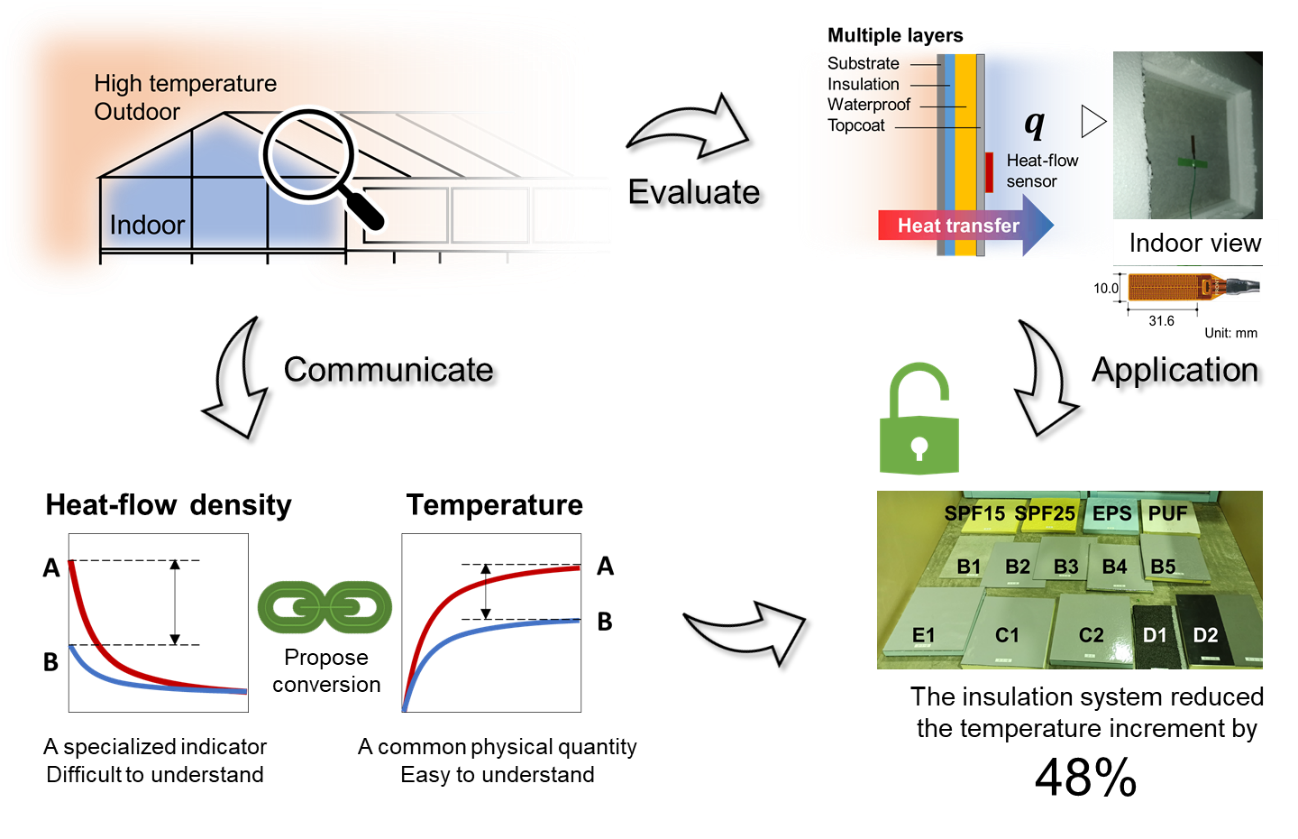Key points of this research results
- We proposed a method to obtain the change over time of heat flow density that can be used to estimate the temperature rise in an indoor space using a heat flow sensor.
- The proposed method was validated by conducting heat penetration experiments using 14 different construction methods with different insulation properties in an environmental simulation chamber.
- The simulation using a full-scale analytical model showed that the insulation method used in this research can reduce the increase in room temperature by 48% in summer compared to the case with no thermal insulation.
Outline
One of the most effective measures to address global climate change in the architecture and building engineering filed is to improve the thermal insulation performance of buildings. Although there are still many efforts to improve insulation performance at the material and construction method levels, the evaluation methods for insulation performance are numerically based on thermal resistance and thermal transmittance (U-value), which are difficult for building owners and users to intuitively understand. To address this problem, this study sought to establish a simple method for estimating indoor temperature, an index that is intuitively understandable to anyone.
In this research, we focused on heat flow sensors that can measure heat flow through walls and roofing materials, and conducted heat penetration experiments under various environmental conditions using an environmental simulation chamber that can reproduce indoor and outdoor conditions, and established a formula to predict heat flow density from heat flow sensor values. Next, using the above evaluation method, we conducted heat insulation performance evaluation tests on 14 types of roofing materials with different insulation performance.
Finally, a full-scale analytical model of a typical factory room was created, and the temperature rise in the factory room was estimated using the characteristic values obtained from the experimental results.


 Home
Home



